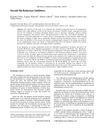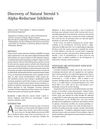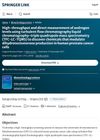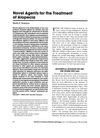Recent Advances in Drug Design and Drug Discovery for Androgen-Dependent Diseases
February 2016
in “
Current Medicinal Chemistry
”
androgen-dependent diseases prostate cancer benign prostatic hyperplasia DHT dihydrotestosterone steroidal molecules non-steroidal molecules 5α-reductase inhibitors type 1 isozymes type 2 isozymes testosterone reduction androgen production 17β-HSD5 4-azasteroidal derivatives finasteride dutasteride phytopharmaceuticals pregnenolone derivatives dehydroepiandrosterone derivatives progesterone derivatives CYP17 inhibitors non-steroidal androgen receptor antagonists androgenic alopecia Propecia Avodart
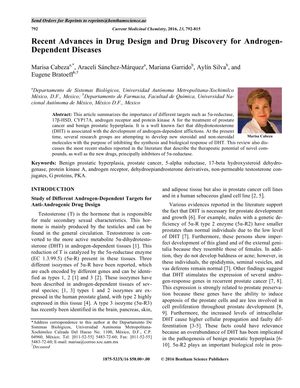
TLDR New treatments for prostate cancer and BPH show promise, including novel compounds that target hormone synthesis and response.
The document from March 16, 2016, reviews recent advances in drug design and discovery for androgen-dependent diseases, with a particular focus on prostate cancer and benign prostatic hyperplasia (BPH). It discusses the role of dihydrotestosterone (DHT) in these diseases and the development of new steroidal and non-steroidal molecules to inhibit DHT synthesis and biological response. The review details the therapeutic potential of novel compounds, especially inhibitors of 5α-reductase, and the importance of targeting both type 1 and type 2 isozymes. It also explores the mechanisms of testosterone reduction to DHT, the metabolic pathways of androgen production, and the role of enzymes like 17β-HSD5 in DHT biosynthesis. The paper highlights the design of 4-azasteroidal derivatives, such as finasteride and dutasteride, and the potential of phytopharmaceuticals in treating BPH and prostate cancer. It concludes with the promise of new pregnenolone, dehydroepiandrosterone, and progesterone derivatives as effective 5α-R inhibitors, and the potential of CYP17 inhibitors and non-steroidal androgen receptor antagonists for prostate cancer therapy. Additionally, it mentions the effectiveness of various compounds in clinical studies for prostate cancer treatment, with some showing anti-tumor effects and others being discontinued due to side effects.

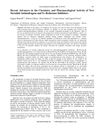


![Synthesis and In Vitro Study of 17β-[N-Ureylene-N,N′-Disubstituted]-4-Methyl-4-Aza-5α-Androstan-3-Ones as Selective Inhibitors of Type I 5α-Reductase](/images/research/d19df8a7-8de6-4430-8a0d-4ffa1f502985/small/15608.jpg)


